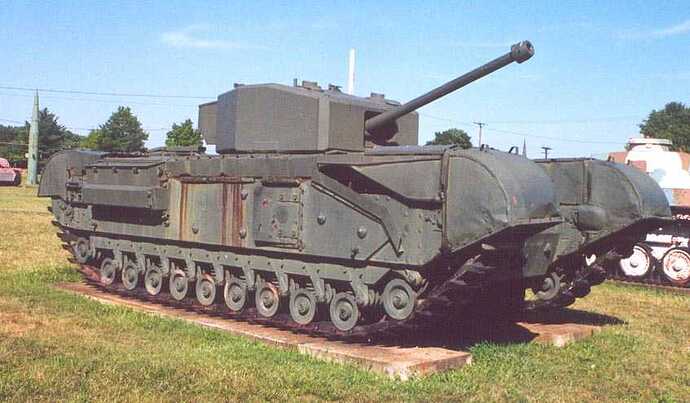With respects to Kallinikos, the Churchill was not designed as an assualt tank, where the likleyhood of ‘mixing it’, with enemy armour was greater, but as an infantry support tank, hence its slow overall speed, etc.
In the early days of the war,(before Tiger,Panther, etc) -and the increased use of the 88mm as an AT gun, it along with others of its ilk could well have proven themselves a match, for enemy armour.
Unfortunatly, your answer, as history has shown, against the top German tanks, all Allied armour was vunerable.













